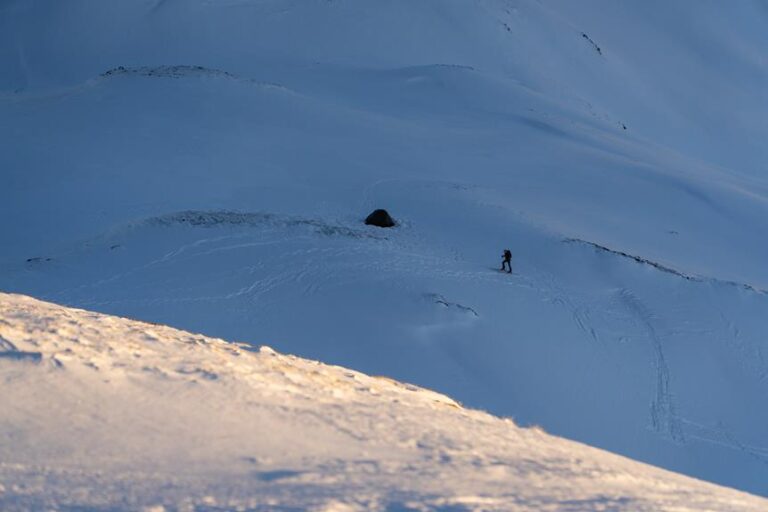Do New Skis Need to Be Waxed – Top Secrets Revealed
So, you've just purchased a brand new pair of skis and you're ready to hit the slopes. But before you do, you might be wondering if those shiny new skis need to be waxed.
Well, let's just say that giving your skis a little TLC before their first run can make all the difference in your performance on the mountain. And trust me, you don't want to miss out on the benefits that come with proper waxing.
But I'll let you in on a little secret – there's more to it than just the initial waxing. Curious? Well, keep reading, because there's a lot more to uncover about the importance of waxing your new skis.
Importance of Waxing New Skis
Waxing new skis is crucial for optimal performance and to protect the ski bases from drying out and water damage. When you purchase a new pair of skis, they typically come with a factory wax. However, this factory wax may have dried out over time or may not be of the highest quality. That's why it's important to wax your skis before hitting the slopes.
Waxing your new skis provides several benefits. Firstly, it helps to maintain the condition of the ski bases by preventing them from drying out. Dry bases can lead to decreased performance and potential damage. Secondly, waxing creates a smooth and slippery surface, which enhances glide, speed, control, and maneuverability. This can greatly improve your overall skiing experience.
It's important to note that the quality of factory wax can vary among manufacturers. Therefore, it's recommended to have your skis waxed at a ski shop or learn how to do it yourself. Regular waxing not only extends the lifespan of your skis but also reduces the risk of damage and wear.
Benefits of Waxing for Ski Performance
When it comes to optimizing your skiing experience, ensuring the best performance and protection for your new skis is key. Waxing your skis regularly brings a range of benefits that can greatly enhance your ski performance. Let's take a look at the advantages of waxing:
| Benefits of Waxing for Ski Performance |
|---|
| Enhanced glide and speed |
| Better control and maneuverability |
| Extended lifespan of skis |
| Customization to specific snow conditions |
| Protection for ski bases |
First and foremost, waxing your skis enhances the glide and speed, resulting in a smoother and faster skiing experience. This improved performance allows you to effortlessly navigate the slopes with ease and grace. Additionally, regular waxing provides better control and maneuverability, making your skiing more enjoyable and responsive.
Waxing also plays a crucial role in extending the lifespan of your skis. By reducing friction and wear on the base, waxing helps prevent damage and prolongs the durability of your skis. Moreover, improved waxing techniques can help customize your skis to specific snow conditions, optimizing their performance on different types of terrain.
Another important benefit of waxing is the protection it provides for the ski bases. Wax acts as a barrier, preventing the bases from drying out and maintaining their integrity. This protection ensures that your skis remain in top-notch condition, ready to tackle any slope.
Proper Waxing Techniques for New Skis
To properly maintain your new skis and optimize their performance, it's essential to follow the proper waxing techniques. Waxing not only protects the ski bases from drying out but also enhances your skiing experience. Here are four important steps to ensure you wax your new skis correctly:
- Prepare the ski bases: Before applying wax, clean the bases with a ski-specific cleaner to remove any dirt or residue. This allows the wax to adhere better and provides a smooth surface for optimal performance.
- Choose the right wax: Select a wax suitable for the conditions you'll be skiing in. Different waxes are designed for various temperatures and snow conditions. Consult your ski manufacturer or local shop for recommendations.
- Apply the wax: Melt the wax onto the ski bases using an iron set to the appropriate temperature. Spread the wax evenly, moving from tip to tail, and make sure to cover the entire base. Allow the wax to cool and harden before moving to the next step.
- Scrape and brush: Once the wax has hardened, use a plastic scraper to remove the excess wax. Scrape from tip to tail, applying gentle pressure. Finally, brush the bases with a ski brush to further smooth and polish the surface.
Signs That Indicate Your Skis Need Waxing
After properly waxing your new skis, it's important to be able to recognize the signs that indicate when they need waxing again. One of the key signs to look out for is a dry and chalky appearance on the base of your skis. If your skis start to look rough and dry, it's a clear signal that they need waxing.
Another sign to watch for is how your skis perform on the snow. If they stick to the snow instead of gliding smoothly, it's time to wax them. Additionally, inspect the edges of your skis for areas without wax spreading. This is a clear indication that you need to apply more wax.
Remember, the performance of your skis greatly depends on their waxing. If you notice any of these signs, it's best to take your skis to your local ski shop or wax them yourself using a waxing iron. Applying the appropriate temperature wax and ensuring a fresh wax coat will significantly improve your skis' performance.
As a rule of thumb, regularly inspect your skis and keep an eye out for these signs to maintain optimal performance on the slopes.
Frequency of Waxing for Optimal Ski Maintenance
For optimal ski maintenance, it's important to wax your skis regularly. Waxing helps protect the base from drying out and ensures optimal ski performance.
Here are some key points to consider regarding the frequency of waxing for optimal ski maintenance:
- Regular Waxing: It's recommended to wax your skis every 5 to 10 ski days or after every 6 to 8 hours of skiing. This regular waxing routine helps maintain the performance of your skis and keeps them in top condition.
- Spring Skiing or High Snow Impurities: In areas with high snow impurities or during spring skiing, more frequent waxing may be necessary. These conditions can cause the wax to wear off quickly, affecting the ski's glide and overall performance. Regular waxing helps counteract these effects.
- DIY Waxing: Waxing can be done at home with the necessary tools, making it a convenient and cost-effective maintenance option. By waxing your skis yourself, you can ensure they're properly cared for and ready for your next adventure.
- Signs for Waxing: Keep an eye out for signs that indicate when waxing is needed. If you notice a dry, chalky appearance on the base of your skis or find that they're sticking to the snow, it's time to wax them. Regular maintenance will help prevent these issues and keep your skis performing at their best.
Frequently Asked Questions
Should You Wax New Skis Before First Use?
You should definitely wax new skis before the first use. Ski maintenance is crucial, and waxing improves ski performance. It's important to know waxing techniques, frequency, and benefits. You can do it yourself or seek professional waxing services for better results.
How Do You Prepare New Skis?
To prepare new skis, start by waxing them to prevent drying out. Then, consider ski storage, choosing the right bindings, and ski maintenance for beginners. Learn top waxing techniques, ski tuning essentials, and the importance of edge maintenance. Also, understand ski waxing for different snow conditions.
What to Do After Buying New Skis?
After buying new skis, proper storage is important. Make sure to adjust your bindings correctly, choose the right ski boots, and break them in. Consider waxing for better performance and sharpening ski edges for optimal skiing. Don't forget about proper maintenance and choosing the right ski poles.
How Do I Know if My Skis Need Waxing?
To know if your skis need waxing, look for signs of dryness like a chalky base and rough surface. Regular waxing improves performance and builds a better bond with your skis. Professional waxing, different types of wax, and DIY tips are all available.
Conclusion
In conclusion, it's crucial to wax new skis before use to ensure optimal performance on the slopes.
Waxing helps prevent the base from drying out, seals it to prevent water damage, and provides a slippery surface.
Whether you choose to have your skis waxed at a ski shop or do it yourself at home, regular waxing is necessary for proper ski maintenance and to enhance your skiing experience.






